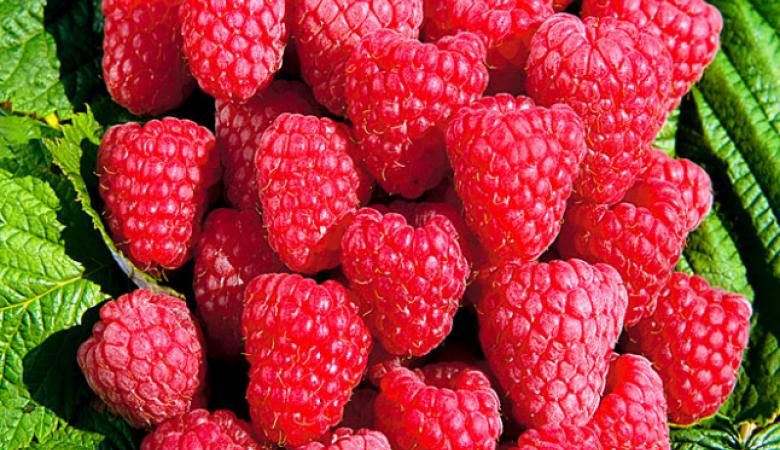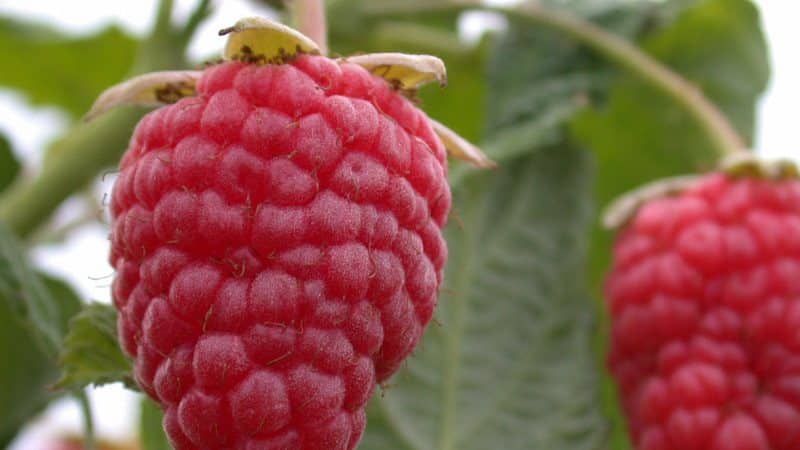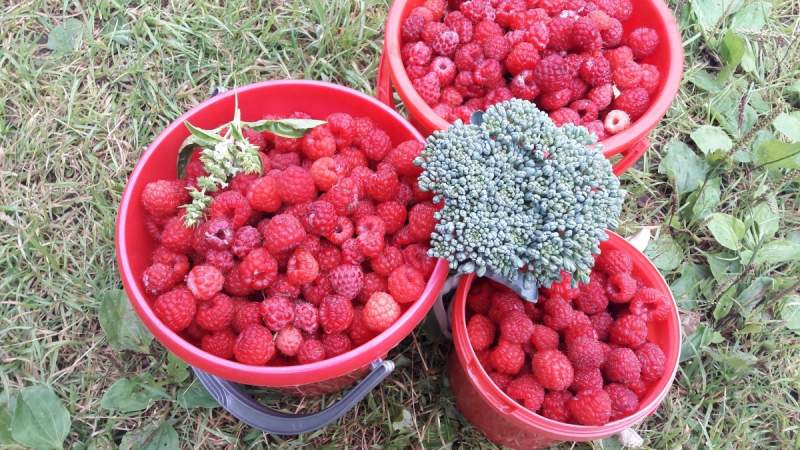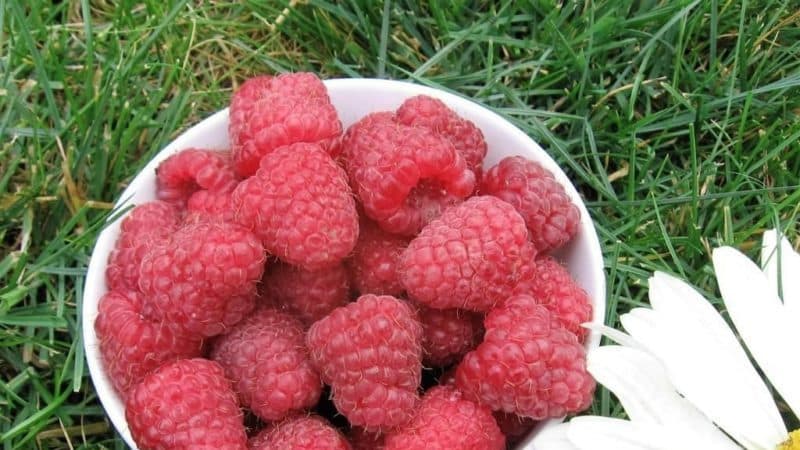The best varieties of remontant raspberries for the south of Russia
Raspberries love light and warmth, so most varieties are suitable for growing in the southern regions of the country. Summer residents prefer remontant ones - they are more difficult to care for, but every year they give a stable harvest of tasty and large berries. Remontant raspberries bear fruit 2-3 times during the summer; according to the ripening period, they are divided into early, middle and late ripening. Let's consider the best remontant varieties for the south of Russia, the features of their cultivation and varietal characteristics.
The best varieties of remontant raspberries for the south of Russia
When choosing a variety, gardeners pay attention to the size and shape of the berries, density and sugar content, nuances landings and cultivation. Some prefer small raspberries and freeze them for the winter, others only grow large-fruited, they prepare jam and compotes from it. An important point when planting raspberries in the south is heat resistance and drought resistance. Raspberries must have these qualities, otherwise the high temperature will reduce productivity and will increase the incidence of bushes.

Drought resistant
To plant drought-resistant varieties, it is recommended to choose areas with nutritious and loose soil. The land is prepared in advance, fertilized with a mixture of peat and manure. Drought-resistant remontant raspberry even in the absence of long-term watering, it bears fruit consistently.
Amber
The ripening period is medium-late. Amber is universal in use: compotes and jams are prepared from the fruits, eaten fresh, dried and frozen. The bushes are slightly spreading, average height.There are short green thorns at the bottom of the plant. The leaves are truncated, small, and there is a slight waxy coating on the shoots. The weight of the berry is from 3 to 7 g, the shape is spherical, the original color is bright orange with a reddish blush. The pulp is sweet and sour, without aroma, the consistency is tender and juicy.
In addition to drought resistance, gardeners value Amber for its unpretentiousness in cultivation and immunity to common diseases: root canker, ring spot, anthracnose. Insects rarely damage Amber.
Atlant
The mid-season remontant variety Atlant is widespread in the southern regions and central zone of the Russian Federation. The bushes are wide and powerful, requiring a lot of free space for growth and development. It is not recommended to plant them next to blackberries, since the crops have similar diseases and pests. The shoots are brown with a strong waxy coating, the thorniness is medium.
The leaves are dark green, wrinkled, with slight pubescence. The flowers are medium in size, the berries are large - the weight of one varies from 4 to 8 g. The shape of the fruit is trapezoidal, the color is rich red, shiny. The pulp is medium density, sweet and sour, aromatic. Tasting score Atlanta - 4.2 points. The harvest is suitable for fresh consumption and processing, transportation and long-term storage.
Augustine
The bushes of the drought-resistant Augustine are medium-sized, the shoots are brown, and grow upward. The thorns are short and straight, the leaves are dark green and large, the flowers are medium sized. The color of the berries is dark crimson, the shape is blunt-conical and wide. The weight of the fruit is about 3 g, the pubescence is weak. The drupes are tightly located to each other; when ripe, the raspberries do not crumble or crumble. The pulp is sweet and sour and has a classic raspberry taste. The density is average, tasting score - 4 points.Augustine is weakly affected by pests, fungal and viral diseases.
Attention! As a preventative measure, remontant raspberries are sprayed with a 1% solution of Bordeaux mixture or a 0.5% solution of copper oxychloride in early spring. Experienced gardeners also use the preparations “Prognoz” or “Chistoflor” to treat diseases.
With large berries

The weight of large raspberries is 8-10 g. The fruits are used for transportation and storage, sale and personal use. Many gardeners like to preserve large-fruited raspberries whole in a jar - the dessert looks appetizing and attractive.
Orange miracle
The mid-season variety Orange Miracle is universal in use and unpretentious in cultivation. The bushes are tall with straight light brown shoots. The leaves are green and wrinkled, the thorniness is medium. The berries are elongated-conical, weight - 5-10 g. The color is light orange, the drupes are slightly pubescent. The pulp is tender and aromatic, sweet and sour, tasting score - 4 points. It is rarely affected by diseases, heat tolerance is at the level of standard varieties.
Hercules
The bushes are upright and slightly spreading, the shoots are brown, the thorniness is medium. The leaves are dark green, slightly wrinkled, curled. There is no pubescence on the leaf blades. The berries are large, weight - 6-10 g, wide-obtuse conical shape. The pulp is sweet and sour, with a pleasant aroma, grade rating - 4 points. The berries are juicy, so they are used to prepare vitamin cocktails, juices and compotes. After ripening, the fruits do not fall off and hang on the bushes for 1-2 weeks.
Heracles is drought-resistant and is rarely damaged by wasps and other insects. The growing process does not require special knowledge, so any amateur gardener can get a rich harvest.
The sweetest

Sweet and juicy raspberries are good in any form. The taste of the fruit depends not only on the characteristics of the variety, but also on compliance with agrotechnical rules: raspberries are fertilized 2-3 times per season with mineral and organic substances and watered regularly. Competent care stimulates the development of fruits and improves their taste.
Indian summer
The heat-resistant remontant Indian Summer raspberry is harvested in the second half of August. The bushes are compact, about 1.5 m high. The shoots are of medium thickness with large and hard thorns. The berries are truncated conical, weighing about 3 g, rich red in color. The pulp is dense and juicy, the taste is harmonious, sweet and sour. The tasting rating of the variety is 4.5 points. Raspberries are used to make jam and jellies, syrups and compotes. Whole berries are added to baked goods and desserts.
Among the disadvantages of the variety, weak immunity to powdery mildew and purple spot is noted - raspberries require preventive treatment. Summer residents use spraying with a solution of “HOM” or copper sulfate, and also regularly remove weeds.
Ruby necklace
The mid-season variety is distinguished by low bushes and long, straight thorns. The shoots are reddish-brown with slight pubescence and a waxy coating. The shape of the berry is cylindrical, weight is about 5 g. The color is bright ruby, attractive. The pulp is sweet and sour, tender, juicy. It is recommended to use the crop for fresh consumption; it is not suitable for transportation and storage. Heat resistance is high, resistance to diseases and pests is at the level of standard varieties.
Diamond
Diamond bushes have medium vigor. The thorns are small and soft, the shoots are light brown, there is a waxy coating and strong pubescence. The green leaves are wrinkled and slightly curled.The berries are large, weigh about 8 g, and have a conical shape. The color is bright ruby, glossy. The tasting rating of the variety is 4 points, the taste is sweet and sour, the flesh is tender. Heat tolerance is high, immunity is strong. Diamond needs support - the bushes are tied to a trellis, otherwise the shoots will break under the weight of heavy fruits.
Attention! Raspberries are harvested in dry weather. To keep the berries better, they are picked along with the stalk. It is not recommended to pour berries from one bucket to another more than 2 times - the fruits will lose their elasticity and presentation.
Most productive

Yield varieties are grown for personal and industrial purposes. Raspberries are eaten fresh, processed into jams and preserves, and sold in markets and supermarkets. Productivity depends on weather conditions, choice of planting site, fertilizers and watering.
Indian Summer 2
The bushes of the remontant variety are medium spreading, powerful, with brown spiny shoots. The thorns are prickly and straight, the shoots have a waxy coating and weak pubescence. The leaves are green, slightly wrinkled. The berries are conical, pink-raspberry color, the drupes are one-dimensional. The pulp is sweet and sour and aromatic, with a delicate consistency. Tasting score - 4 points. The Indian Summer 2 variety is resistant to diseases and pests. The ripening period is medium-late, the fruiting period is extended, the harvest is harvested 2-3 times during the summer. Drought and heat resistance are high. Productivity - up to 3 kg per plant.
Nizhny Novgorod
Early ripening The unpretentious variety Nizhegorodets is grown in all regions of the country. The bushes are very spreading, the shoots are straight, light brown. The spine is strong at the base of the stem and weak at the top. The thorns are hard and rigid, the leaves are slightly twisted, green, and pubescent.The berries are dark red, blunt-conical, weigh about 6 g. The pulp is sweet and sour, tender and aromatic, the rating of fresh berries is 3.9 points. Nizhny Novgorod is drought-resistant, but is picky about the choice of planting site. Raspberries prefer light and breathable soils with neutral acidity. Fruits consistently, yield is from 3 to 5 kg of raspberries per season.
Bryansk miracle
Late-ripening raspberries bear fruit from August to September. The fruits ripen together, do not fall off, and are easily torn off the stem. The bushes are tall and powerful, the thorniness is average. The shoots are medium thick, the leaves are light green, twisted. The weight of the fruit is from 4 to 6 g, the color is light red, the flesh is dense and elastic. The taste is pleasant and refreshing, sweet and sour. Tasting score - 4 points. Raspberry Bryanskoe Miracle is rarely affected by wasps and aphids, powdery mildew and anthracnose. Universal purpose, yield - up to 4 kg per plant per season.
Features of growing raspberries in the south of Russia
Raspberries love moisture, but do not tolerate waterlogging. The process of planting and growing in the south has several nuances that every gardener should know.
Landing rules
Raspberries are planted in late autumn. In the south, winters are warm and mild, so the shoots do not freeze and quickly adapt to climatic conditions. Two- or three-year-old seedlings are selected for planting - they are inspected for stains and rot. For 2-3 days, the roots are soaked in a bucket of water at room temperature and a growth stimulator. In the south, it is recommended to plant raspberries in partial shade to protect the plant from the scorching sun and high temperatures.
Raspberries are planted in holes 25-30 cm deep. The buds of the rhizome must be at soil level, otherwise the seedlings will freeze.After planting, the seedling is watered generously with warm water into a pre-prepared tree trunk groove, then mulched.
It is not recommended to plant raspberries next to blackberries. The best neighbors are fruit trees (apples and pears). Many summer residents plant raspberries along the fence.
Attention! They improve the quality of the soil with peat, vermicompost and humus. A mixture of these components is added to the hole before planting. If the soil is acidic, it is limed - sprinkled with dry lime, and wood ash is added.
Nuances of care
In dry weather, gardeners pay special attention to watering - moisten the soil from a bucket or hose. The procedure is carried out every 5-7 days, during the rainy season the amount is reduced. It is recommended to remove weeds to prevent pests. Loosen the soil in the raspberry garden carefully so as not to damage the roots of the plant. If the plant is older than 5 years, remove the shoots with a hoe every 2 weeks. Thanks to this, the raspberry yield increases by 2 times.
In spring, raspberries are thinned out and old and dry branches are removed. 6-8 young green shoots are left per 1 m. This guarantees good ventilation and light. In autumn, shoots are mowed down to make room for new ones. In addition to pruning, attention is paid to mulching. It retains moisture in the soil, prevents the development of small weeds, and protects the roots from drying out.
Attention! If the raspberry leaves are thin and the shoots are dry and weak, it means the plant does not have enough phosphorus. Yellow leaves indicate a lack of nitrogen and iron, brown leaves indicate a deficiency of potassium. It is recommended to feed with potassium salt or wood ash 2-3 times per season. Dry and diluted ash is suitable for fertilizer. It does not contain chlorine and strengthens the plant’s immunity.
Conclusion
For planting in the southern regions, remontant heat-resistant varieties are chosen - Yantarnaya, Augustina, Atlant. The most productive raspberries include Indian Summer 2 and Bryanskoye Divo, and the sweet ones include Diamond and Ruby Necklace. Seedlings are planted in spacious and slightly shaded areas.
For a rich harvest, water raspberries once every 7 days, especially in dry weather. To develop fruits, the soil is fed with ash, potassium salt, urea, and manure. Raspberries are suitable for fresh consumption and processing. Thanks to the vitamin composition of the berries, healthy and tasty compotes, preserves, and jams are obtained.